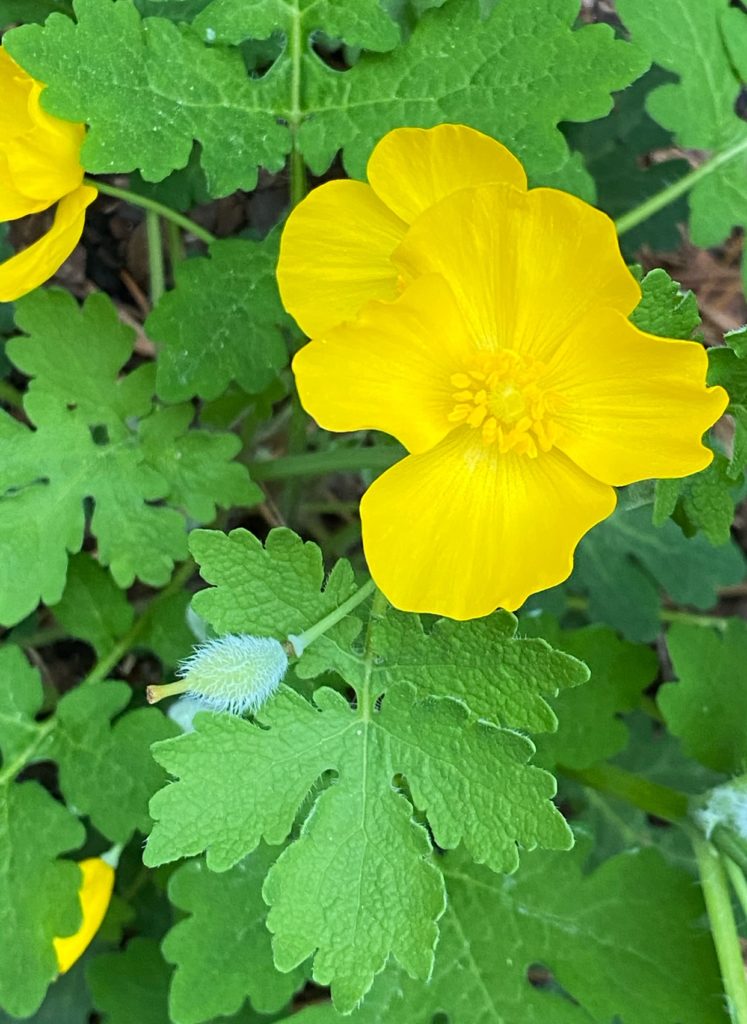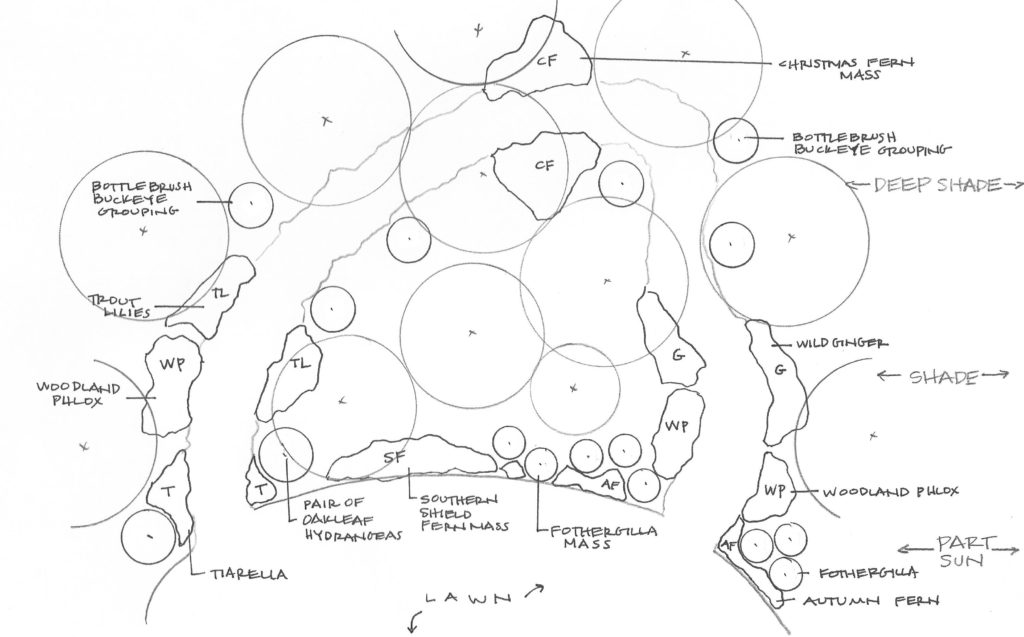So many homes in the South have back yards that are framed by woodland. When lots are cleared for housing, builders tend to leave existing trees in side yards and back yards, while carving out a space for that much sought-after lawn for children and pets. While most homeowners are focused on greening up their fescue or bermuda turf, that often ignored shady area beyond the grass holds the potential to be so much more.
I love planting areas hidden from view. While fences and hedges are often used to create private garden spaces, a woodland path is a simple and inexpensive alternative. Even a modest patch of land with a stand of pines or hardwoods can be transformed simply by creating a path topped with bark mulch and planting groups of shade-loving perennials and shrubs.
As you walk through any woodland area you’ll find that some areas are in sunlight for a few hours each day, some fall under the dappled shade of tall trees, and some are in deep shade, with no sunlight reaching the forest floor. Mature pine trees create what is called “high shade”, and there are many types of plants that thrive in these conditions. Hardwood trees create dense shade, and in these areas only the most shade-tolerant plants, such as Christmas ferns, will grow. At the edge of woodland, you’ll likely have sun for part of the day and these areas are perfect for transition plants, such as viburnums, Carolina allspice shrubs, or rhododendrons that will give a woodland feel while providing blooms, berries, and interesting foliage through the seasons.

Unless the woodland area is at the bottom of a hill, where rainfall tends to collect, the soil will likely be dry in mid-summer, which is a consideration when thinking about plant material. You’ll be surprised, however, how much moisture is retained under the cover of pine straw and fallen leaves from fall through winter and into spring. It’s a good idea to water any new planting for the first year after planting, when rainfall isn’t consistent in spring and summer. Do a bit of homework and use plant material, such as native Christmas ferns and wood sorrels, for areas that might dry out in summer months. Damp spots are a wonderful place to try plants such as shield ferns and astilbes.

Soil structure will vary greatly depending on where you are in the South, but I find that most woodland areas, no matter how small, have decent soil and sometimes you will find a goldmine of loose, loamy soil, which is heaven to anyone who gardens in clay. You can thank the millions of creatures living in the soil, busily breaking down leaves, pine needles, and branches over the years, for saving you the step of amending the soil before planting.

Below you’ll find an example of a simple woodland garden carved out of a stand of mature trees with some ideas for appropriate plant material. (Note: The large circles on the drawing indicate mature trees.) At the entrance to the path, the plants I’ve chosen for this example are suited for areas that receive a bit of sun at some point during the day, while the middle areas are in shade, and the arc of the path is in deep shade, which is a bit more challenging in terms of plant choices.

Plant suggestions for areas in part-shade, which receive a few hours of sun each day or dappled sun through the day:
Fothergilla (native shrub with spring flowers and fall color) Fothergilla major or Fothergilla gardenii
Oakleaf hydrangea (native shrub with late spring flowers and fall color) Hydrangea quercifolia
Tiarella (native perennial with spring flowers) Tiarella cordifolia
Southern shield fern (native fern) Thelpteris kunthii
Autumn fern (evergreen fern) Dryopteris erythrosora
Woodland phlox (native perennial with spring flowers) Phlox divaricata
Trout Lily (native perennial with spring flowers) Erythronium americanum
Plant suggestions for areas in deep shade, receiving little or no sunlight during the summer months:
Wild ginger (native perennial) Asarum canadense
Christmas fern (native fern, evergreen) Polystichum acrostichoides
Bottlebrush buckeye (native shrub with early summer flowers) Aesculus parviflora
Plant sources:
www.monticelloshop.org/ , for bare root and potted plants, such as Bottlebrush buckeye and Christmas ferns. (This was one of my favorite sources in 2020 for unusual bare-root plants, such as mayapples and native foxgloves.)
www.nearlynativenursery.com , specializing in native plants for the South.
www.woodlanders.net, specializing in native and exotic plants.